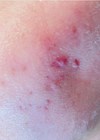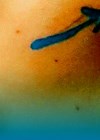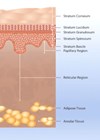An established body of literature acknowledges the efficacy and safety profile of retinoids (a family of compounds derived from vitamin A), in treating a variety of textural skin concerns, such as, coarseness, rhytides, pigmentation, enlarged pores, photodamage and inhibition of matrix metalloproteinase (MMP) activity [1]. Retinol is a prodrug which can be converted to retinoic acid by the skin and is highly effective in skin care [2]. The progression to all-trans retinoic acid within keratinocytes is essential for retinol to be active [3].
Furthermore, Duell et al. [4] have demonstrated unoccluded retinol at 0.25% was found to induce the same cellular and molecular changes observed with the application of 0.025% tretinoin, without irritation. Equally, triethyl citrate is an ingredient that can be used to stimulate production of dermal collagen synthesis, with a secondary effect of hydrolysing to citric acid, which causes an increase in water binding and plumping through stimulating production of glycosaminoglycans [5], demonstrating effective properties in treating photoaged skin.
A further additional ingredient with proven benefits in anti-ageing is N-acetyl tyrosinamide, a novel amino acid derivative which stimulates production of pro-collagen and glycosaminoglycans to restore firmness to ageing skin [6]. Bisabolol is a botanical anti-inflammatory derived from chamomile, with proven anti-inflammatory benefits, and a useful adjunctive ingredient to counteract potential irritation from retinol -based formulations [7]. These ingredients have been blended into a unique retinol peel formulation by NeoStrata to treat a variety of skin concerns, such as acne (including superficial scarring), enlarged pores, hyperpigmentation, and an uneven or rough skin texture. The peel contains a photostabliser to protect the retinol, as well as vitamin E acetate. It requires no pre-treatment preparation or neutralisation. It is suitable for all skin types, owing to the gentle exfoliating properties, and improves the appearance of a variety of cosmetic skin concerns, namely active acne, and associated superficial scarring, including post-inflammatory hyperpigmentation, coarse skin texture through refinement of the appearance of large pores and uneven skin tone.
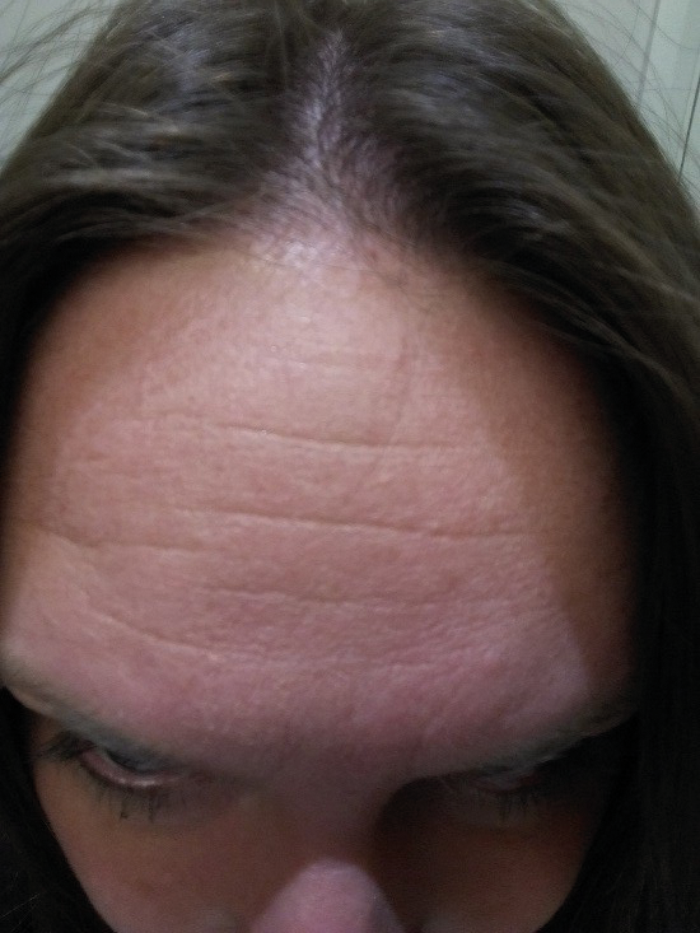
Before the treatment.
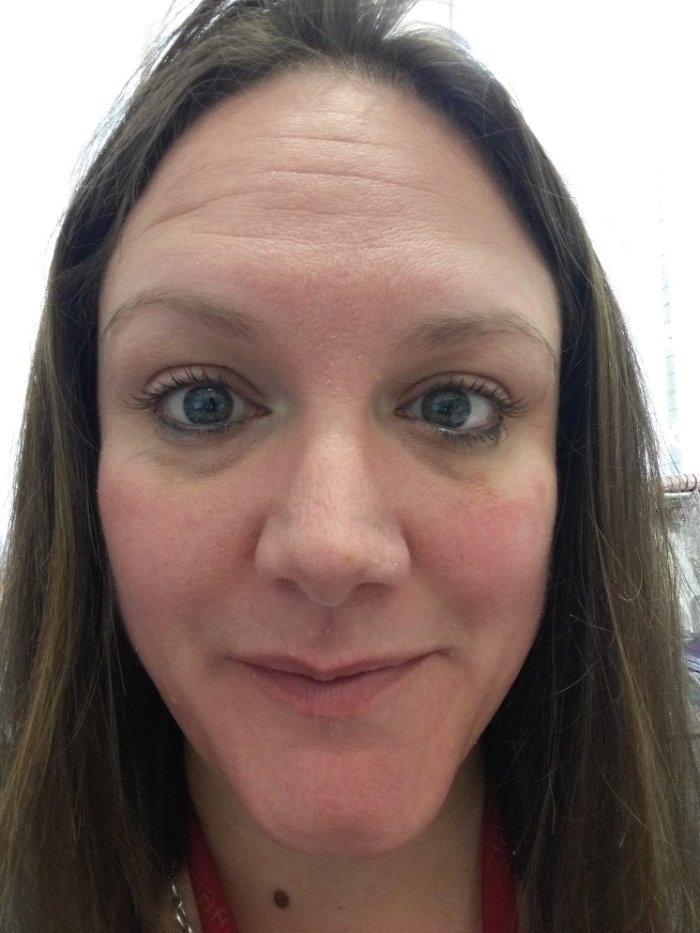
Three days post-treatment.
The medical consent should include discussion and documentation on focal areas for improvement, any pre-existing skin conditions, as well as baseline photography. The peel is not recommended for patients who are pregnant or breastfeeding, those who have a history of keloid scars or active herpes. Systemic retinoids must be discontinued for a minimum of six months prior to the peel, as the skin may be overly sensitised, and the application of any peel formulation after such treatment needs to be carefully considered on a case by case basis, with discussion from the prescribing dermatologist concerning the appropriate timeframe to treat. Caution should also be exercised with smokers and those who are immunosuppressed. If necessary, the patient’s jewellery and contact lenses are removed, and the skin is cleansed with a pH balanced skin cleanser containing 4% gluconolactone, which is poly-hydroxy acid derived from the glucose in corn, used for its gentle hydrating and anti-aging properties [8].
A secondary solution is then applied as a balancing pre-peel cleanser to remove any excess make up and sebum, to bring the skin to a uniform pH, which is left on the skin. Petrolatum (Vaseline) is then applied to the medial and lateral canthi, alar base of the nose, and vermilion border of the lips. If the patient has any tattooing (eye brows, lip border), then these areas should be protected with Vaseline, as well as any cuts / abrasions, or areas where the peel solution may pool (pronounced nasolabial lines). The patient’s eyes and lips are closed and encouraged to remain closed during the procedure. The NeoStrata retinol peel solution (1.5ml) is poured into a disposable gallipot pot and evenly applied to the skin with a single use brush.
Depending on patient preference, the clinician may apply a single application for lighter peeling, or multiple layers for a stronger peeling effect. Increased application of the peel solution does not increase penetration depth, as this formulation is designed to stimulate intra-epidermal activity. Once the desired quantity of solution has been applied, the patient’s skin is observed for 10 minutes for signs of discomfort and erythema, and may be immediately washed from the skin in the unlikely presentation of non-tolerance. If the peel is well tolerated, it may be left for three hours for a lighter peel and up to eight hours, or overnight, for an increased peeling effect, before washing off using the gluconolactone cleanser. Recommended post-treatment products containing sunscreen, gluconolactone and lactobionic acid (a bionic poly-hyoxy acid derived from milk sugar with full strength anti-aging benefits) are advised.
Products containing glycolic acid are not recommended post-peel and for one week after due to the potential for skin sensitivity, and the patient is advised to avoid exfoliating and sun exposure. Peeling can commence two to three days post peel and may continue for up to one week. The NeoStrata retinol peel is recommended as a course of four to six at six to eight week intervals.
References
1. Bouloc A, Vergnanini AL, Issa MC. A double blind randomized study comparing the association of Retinol and LR2412 with tretinoin 0.025% in photoaged skin. J Cosmet Dermatol 2015;14:40-6.
2. Grunebaum LD, Baumann LS. Nonprescription topical treatments for skin rejuvenation. Facial Plast Surg 2014;30(3):3-11.
3. Kurlandsky SB, Xiao JH, Duell EA, et al. Biological activity of all-trans retinol requires metabolic conversion to all-trans retinoic acid and is mediated through activation of nuclear retinoid receptors in human keratinocytes. J Biol Chem 1994;269(52):32821-7.
4. Duell EA, Kang S, Voorhees JJ. Unoccluded retinol penetrates human skin in vivo more effectively than occluded retinyl palmitate or retinoic acid. J Invest Dermatol 1997;109(3):301-5.
5. Schlessinger J, Green B, Edison BL, et al. A firming neck cream containgin n-acetyl glucosamine significantly improves signs of aging on the challenging neck and décolletage. J Drugs Dermatol 2016;15(1):47-52.
6. Farris PK, Edison BL, Weinkauf RL, Green BA. A novel, volumizing cosmetic formulation significantly improves the appearance of target glabellar lines, nasolabial folds, and crow’s feet in a double-blind, vehicle-controlled clinical trial. J Drugs Dermatol 2014;13(1):41-6.
7. Draelos ZD. A pilot study investigating the efficacy of botanical anti-inlfammatory agents in an OTC eczema therapy. J Cosmet Dermatol 2015;15:117-9.
8. Vignoli GP, Oresajo J, Green B. Alpha hydroxyacids modulate stratum corneum barrier function. Brit J Dermatol 1997;137:934-8.
COMMENTS ARE WELCOME


